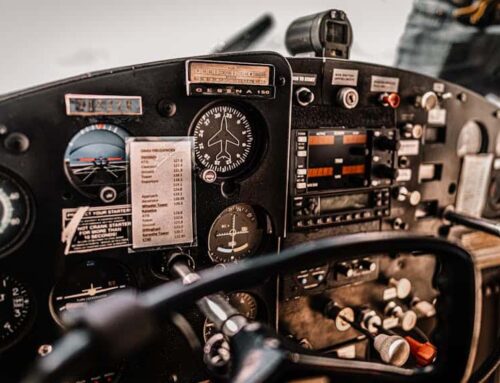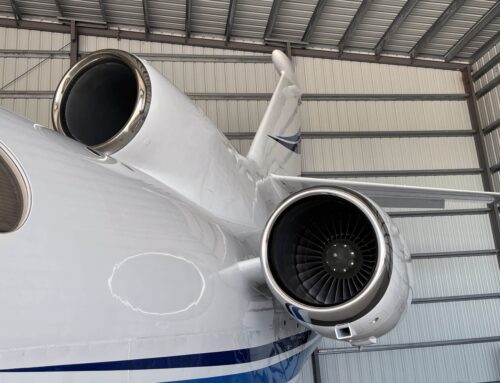Evolution of Aviation Safety Solutions
It is well known that flight safety solutions can be developed for aviation safety, enhancing safety factors for those who fly, using new technologies such as real-time monitoring, sophisticated communication tools, and anti-collision systems, allowing to decrease accident rate and emergency response time. Improving training programs for pilots and maintenance staff which can help to be better prepared to any type of possible situation in aviation safety. Overall, the aviation safety solutions that are being developed today has the ultimate purpose to provide more safer flight for both passengers and crew, applying all of the modern technology these days.
Challenges Faced by the Aviation Industry
How to achieve uniform safety laws across shared international airspace, how to cope with increased numbers of drones sharing airspace, how to mitigate the environmental impact of flying all represent considerable problems, and concern over cybersecurity has risen as the sector increasingly automates its networks through digital technologies. Looking ahead, aviation must respond to the challenges posed by increased demand for flying, and a decline in the number of pilots.
Technological Advancements in Aviation Safety
Aviation safety is getting a boost from new technologies. In order to provide a even more secure flying, automated emergency landing, predictive maintenance and drone surveillance would be analysed to enhance the safety precautions, meanwhile helping to monitor every flight securely. By these methods, passengers would have a better experience of flying because the technology would make flying more consistent. As a result, it is an opinion whether passengers can have an relief and more safety feeling while flying than before.
Importance of Aircraft Safety Regulations
Law regarding aircraft safety is necessary because it ensures safe air flights and protects the passengers from any mishap. To reduce the takeoff and landing risk,these laws and rules cover every aspect related to the safety of aviation. The following points demonstrate the seriousness of aviation safety laws:
- Safety regulations save lives by preventing avoidable accidents and ensuring that strict safety protocols are followed.
- Regulations promote consistency in aircraft operations, ensuring that all airlines adhere to the same high standards of safety.
- Compliance with regulations is essential to maintaining public trust in the aviation industry and reassuring passengers that their safety is a top priority.
- Continuous improvements to safety regulations are made based on lessons learned from past incidents, technology advancements, and industry best practices.
- Global cooperation on safety regulations among airlines, regulatory authorities, and international organizations is essential for maintaining a high level of safety in aviation.
Following these rules is essential for the safety of aviation in the future as technology develops, planes get more sophisticated, and air travel gets more and more popular.
Role of Artificial Intelligence in Aviation Safety
The application of artificial intelligence (AI) is essential to improving aviation safety protocols. AI can anticipate and avert potential mishaps by evaluating enormous volumes of data to identify probable safety concerns early on. AI-enabled solutions can help with real-time weather, pilot performance, and aircraft system monitoring. They can also provide prompt alerts and recommendations to ensure safe flying. The aviation sector is undergoing a transformation thanks to this technology, which will also eventually result in more effective safety procedures and safer flight operations.
Enhancements in Pilot Training and Simulation
Aviation safety has increased thanks to advancements in pilot training and simulation. In order to improve pilot proficiency, airlines are now investing in cutting-edge training courses that use simulation technology. This enhances their capacity to deal with actual problems by allowing them to practice various scenarios in a safe setting. Pilots can also receive training using virtual reality simulations, which offer a realistic experience without the dangers of real flight. Pilots are constantly ready to tackle any obstacles they may encounter in the air thanks to ongoing training.
Impact of Weather Forecasting on Flight Safety
For the purpose of improving flying safety, weather forecasting is essential. To plan their routes and make wise decisions when flying, pilots depend on precise weather forecasts. Pilots can prevent hazardous weather circumstances like thunderstorms and strong winds, which can endanger both the aircraft and its occupants, by using accurate and timely weather forecasts. Meteorologists are able to give pilots real-time information on weather patterns through the use of sophisticated technologies and data processing, allowing them to modify their flight plans accordingly. The possibility of aircraft delays and cancellations owing to unforeseen weather events has been greatly decreased by improved weather forecasting, improving overall aviation safety.
Emergency Response and Crisis Management
Airlines and aviation authorities need to act swiftly and effectively when passengers suffer unforeseen incidents in flight. Here are some essential elements of crisis management and emergency response in aviation:
- Emergency Response Plan: Airlines have detailed plans outlining how they will handle emergencies, including communication procedures, evacuation protocols, and coordination with relevant authorities.
- Crisis Management Team: Airlines designate a team of trained professionals to manage crises, make decisions under pressure, and ensure the safety of passengers and crew.
- Training and Drills: Regular training sessions and emergency drills are conducted to prepare airline staff for various scenarios, from medical emergencies to natural disasters.
- Technology and Innovation: Advancements in technology, such as real-time data monitoring and communication systems, help airlines respond swiftly to emergencies and manage crises more effectively.
Future Trends in Aviation Safety Solutions
Modern technology is being used in aviation safety to improve flight safety. Predictive maintenance, real-time monitoring systems, and artificial intelligence are some of the upcoming developments in aviation safety solutions. By anticipating and averting possible problems before they arise, these inventions seek to make aircraft travel safer for both crew and passengers. Drones are now being used for safety checks, which enhances maintenance procedures and lowers hazards. In order to solve safety concerns in the aviation sector, cooperation between manufacturers, airlines, and regulatory agencies is being promoted.
Conclusion: Ensuring Safe and Secure Air Travel
The aviation industry is always developing new safety measures to ensure that air travel is safe and secure. Artificial Intelligence and data analytics are examples of advanced technology being used to improve monitoring and anticipate possible hazards. In order to guarantee passenger safety, stricter laws and better training for pilots and crew members are also essential. Furthermore, to avoid mishaps and uphold strict safety regulations, continuous research and development is being done in the fields of aircraft design and maintenance protocols. The future of flight appears bright as long as proactive measures are taken and innovation is welcomed, with a sustained emphasis on safe and secure air travel.




